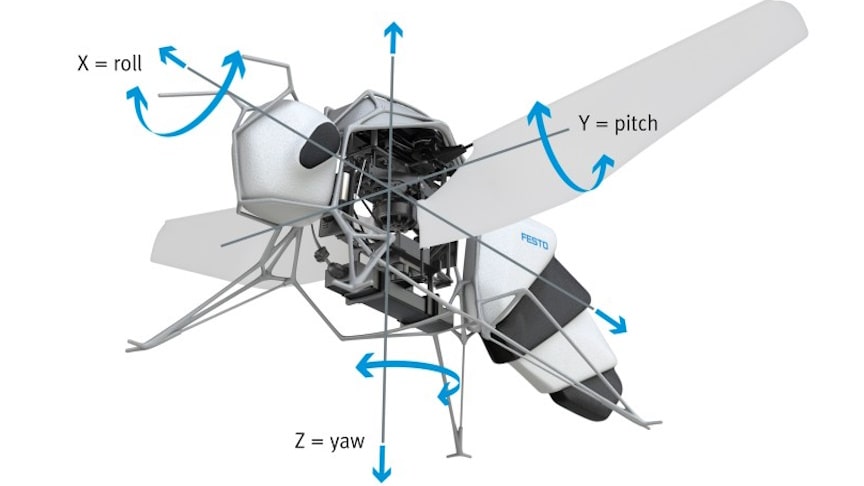The BionicBee from Festo’s Bionic Learning Network is small, ultra-light and can fly autonomously in a swarm thanks to an indoor localisation system with ultra-wideband technology. The BionicBee is the first flying object that the team has developed and that can fly completely autonomously in large numbers and as part of a swarm. At around 34 grams in weigh centimetres, the BionicBee is the smallest flying object from the Bionic Learning Network to date.
source.image: festo
This is the first time that the developers used the generative design method: after entering a few parameters, a software finds the optimal structure based on specific design principles in order to use as little material as necessary to create the most stable design possible.
source.image: festo
This consistent lightweight construction is crucial for good manoeuvrability and flight duration. A brushless motor, three servo motors, the battery, the gear unit and various PCBs are installed in the tightest of spaces. The intelligent interaction between the motors and the mechanics means that the frequency of the wing beats can, for example, be precisely adjusted for the various manoeuvres.
Advertisement
The artificial bee flies with a wing beat frequency of 15 to 20 hertz. The wings beat back and forth at a 180-degree angle. The brushless motor drives the wing beats without backlash via a precisely guided, ultra-light mechanical construction. The higher the speed, the higher the wing beat frequency and the lift.
The three servo motors at the base of the wing change the geometry of the wing in a particular way, thus increasing the effectiveness of certain wing positions and generating a specific variation of the lift.












